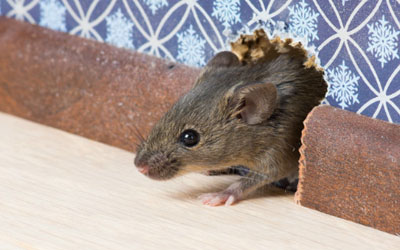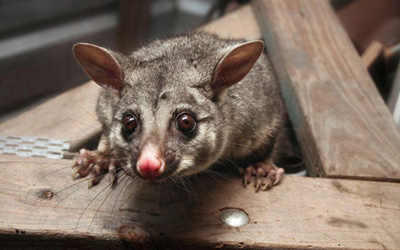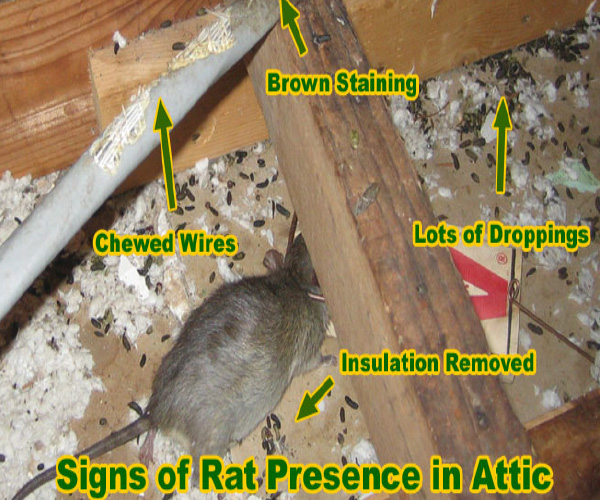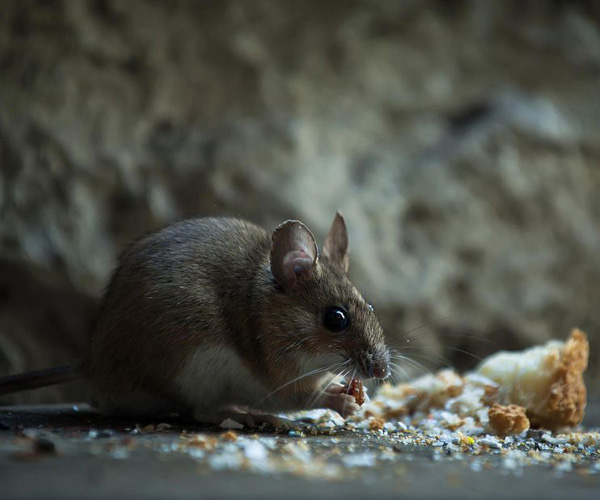Rodent
Our buildings are ideal for rats and mice because they provide food, water, warmth and shelter. For these reasons you may notice rats and mice inside buildings more in the cooler months.



Major Species of Rodents Found
House Mouse (Mus Musculus)
Appearance:
Adults brown to grey, furry, 10-16 cms including the 5-8 cms tail, large ears and relatively small eyes.
Life Cycle:
Female may have 3-5 litters. Young (4-8 per litter) are born furless and blind, 19-21 days after mating. They reach sexual maturity in six to ten weeks. Life span of adults is about nine to twelve months.
Notes:
Mice cause damage to structures and property, and they may transmit diseases such as salmonellosis (food poisoning). They have a characteristic musky odor that identifies their presence – they are occasionally seen during daylight hours. Other signs of infestation are droppings, fresh gnawing and tracks. Nests are often found in sheltered locations and are made from fine shredded paper or other fibrous material. They prefer cereal grains, but will eat many kinds of food. They are sporadic feeders, nibbling bits of food here and there. They have keen senses of taste, hearing, smell, and touch and are excellent climbers and acrobats.
They will run horizontally along wire cables or ropes and can jump up 13 inches from the floor onto a flat surface and can squeeze through openings slightly larger than 1/4 inch in diameter.
Brown Rat/ Norway Rat / Sewer Rat (Rattus Norvegicus)
Appearance:
Adult : Brown, with whitish brown underparts, 18-20cms, with a 15-18cms tail.
Life Cycle:
Prolific breeders with about 60-70 young in a year.
Notes:
It is larger and more robust-looking than its common cousin the House Rat, and the tail is shorter. An excellent swimmer, it is found in sewers and drains in large cities, where it thrives in the damp, wet surroundings. It is usually limited to seaports and large cities.



Rats and Mice Can...

- Spread disease to humans via their droppings or urine.
- Spread sickness and death via parasites such as fleas and intestinal worms.
- Cause extensive physical damage to electrical wires, doors, skirting boards, books, stored products, food containers and upholstery.
- Spoil and Contaminate food with their droppings, urine or fur.
Signs of Rodent Activity Include:
Droppings :New rodent droppings are shiny and pliable and within 2-3 days become dull and hard.
Mouse droppings are 3-6mm long and have pointed ends. Rat droppings are up to 12mm long and have blunted ends.
Rub marks : These are greasy smear marks and they are caused when rodents rub their fur against vertical surfaces such as walls.
Burrows : Rat burrows are normally found next to waterways and buildings.
Sounds : Rats and Mice are normally heard at night and they include squeaking in the case of mice and clawing
and gnawing in the case of rats.
Nest : A rodent nest is usually made of rags and paper and cardboard.
Gnawing : Rats gnaw to keep their incisors down and use wood, metal, conduit and cables in order to do this.
When rats gnaw cables for instance this can expose bare wires and cause short circuits or fires.
What We Do
Setup a guaranteed program to control rodents in a building and its surrounding environment and advise how you can help reduce future problems.
Inspect: We will carry out a survey and report our findings.
Bait: We will set up rodent bait stations at various strategic locations in and around the buildings. These rodent bait stations securely hold the bait within the station which means that secondary poisoning of non target animals are greatly reduced to almost zero.
Break Neck Traps And Glue Boards: We can set up specially designed traps where baits cannot be used.
What you can do with our help and advice
Sanitation: You can reduce food and water available to rodents. One way you can help is to avoid Keeping rubbish indoors overnight.
Proofing: We can advise you on ways you can help to proof your home against rodent entry.
This may include simple measures such as fixing mesh over holes to prevent rodent entry.
